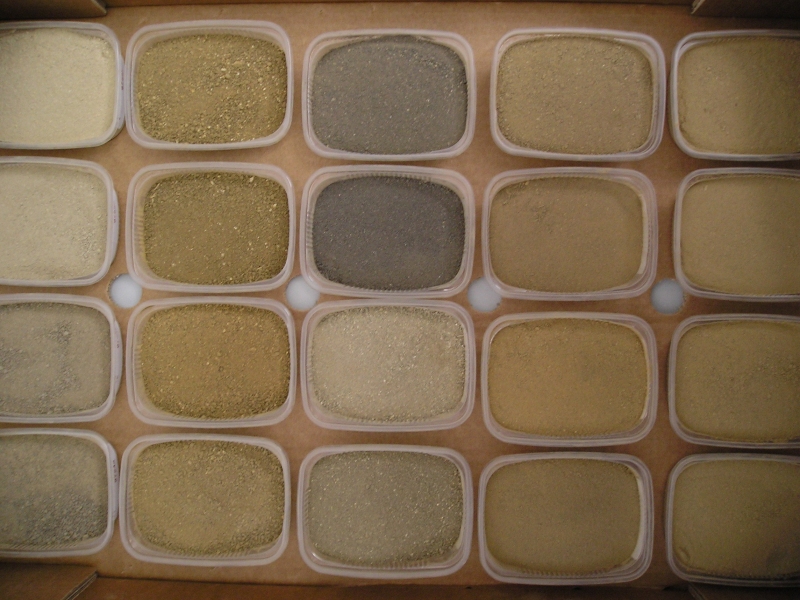The Earth Microbiome Project
Interview with
A new global initiative called the Earth Microbiome Project plans to build up a genetic picture of the billions of bacteria that inhabit every corner of the Earth and to find out how they fit into Earth's ecosystems. Planet Earth Podcast reporter Tim Hirsch has been talking to some of the scientists involved...
Tim - The Atlantic Forest of Brazil is among the most diverse ecosystems on earth. Here, for example, you can find almost a thousand species of birds, and more than 400 tree species have been found in a single hectare. Thanks to DNA sequencing, researchers like Marcia Lambas are now able to uncover a whole new dimension to that biodiversity.
Marcia - What we've found here is that every single tree species it has its own bacterial community that lives on the leaves, and we found the same thing for the bacteria living on the bark, and associated with the roots. We have estimated that each single tree species has approximately 500 or 600 different bacteria species living on the leaf surface.
Tim - Just on the leaf surface?
Marcia - That's right.
Tim - And then when you go down to the bark?
Marcia - Oh, then you have another maybe 200, or 300. If you go down to the roots we have something around a thousand, or even more than that.
Rob - What we have here is a representative sample of the UK's soils, in three boxes.
Tim - I've swapped the heat of the rainforest for a freezer in the Centre for Ecology and Hydrology in Oxfordshire, where Rob Griffiths is using similar techniques to look at the diversity of microbes in British soils.
Rob - Each sample has got a barcode on it. We've got good tracking from exactly where the sample was taken in the field: information that was collected as part of the countryside survey on the kinds of plants that were there, climate, GPS location.
Tim - Okay, well it's getting a little bit cold in here, so why don't we shut up those boxes and continue our conversation outside, before we all freeze to death.
Rob - Here we are in the laboratory now. We have very small tubes in a freezer where we've weighed out the soil. Basically, what we want to do now is extract the DNA. So all the DNA that's in the soil.
Tim - That means you're not looking at individual organisms, you're looking at the total DNA of what's inside, is that right?
Rob - Yeah. We don't really get to see any organisms. But we do know that even a cell that looks identical to another cell could have a completely different genetic makeup. The only real way, unfortunately, that you can look at the ecology of these organisms, is to look at their DNA.
Tim - Next question, which is the difficult one, why does it matter? The more we know about this stuff, how potentially might it help us in the future?
Rob - Well, this is the fundamental question. Once we know where we find different types of microorganisms, we can start doing the really fun science, which is looking to see if it does matter if we find a different diversity in one soil compared to another soil.
Tim - So it could help, for example, to understand the human impact on the environment?
Rob - Yeah. Exactly. The human impact on the environment is the way we manage the land, affecting microbial diversity. Is that going to have any further consequences in terms of, for example, greenhouse gas cycling, which microbes in soil are very important regulators of?
Tim - The samples from the countryside survey will form part of an ambitious project to build up a global picture of microbe biodiversity - a kind of microbe atlas of the world. The Earth Microbiome Project is being coordinated by Jack Gilbert at Chicago's Argon Laboratory.
Jack - We need to understand how the microbes in the ecosystem control ecosystem health, hence, the Earth Microbiome Project wants to investigate microbes around the world. We're trying to understand what they're doing in each ecosystem and how that is affecting the way the ecosystem functions and the services it provides.
Tim - Jack Gilbert previously worked at the Plymouth Marine Laboratory to analyse microbes in the English Channel. His team found that there was a marked seasonal cycle so that a much greater variety of bacteria was found in the winter than in the summer. Professor Dawn Field, also from the Centre for Ecology and Hydrology collaborated in the research.
Dawn - There's been a lot of debate for a long time about whether microbes are everywhere, so that you have the same stock of microbes in every place basically on earth but that the environment selects out only a few to be very, very abundant. Or if we really do find completely different communities in different locations. And some further work that we've done there actually suggests that in many ways the same community is there, it's simply a shift in the proportion. So at different times of the year certain microbial lineages do much better and start to bloom up, so to speak.
Tim - So it's more that you're just detecting them at particular times of year, but they're always there?
Dawn - Exactly. If for example, you wanted to do remediation in terms of the oil spill, it was more effective to put nutrients on that oil spill and pull out of that background the kinds of microbes that could eat oil, than it was to introduce new microbes.
Helen - Dawn Field there from the Centre for Ecology and Hydrology with Tim Hirsh reporting.










Comments
Add a comment